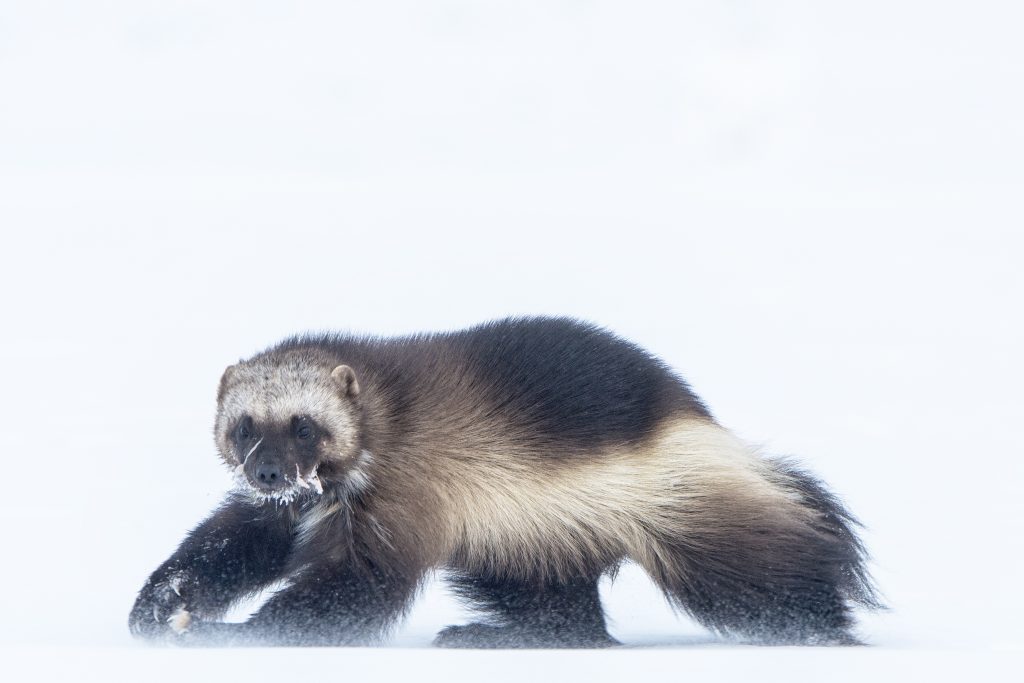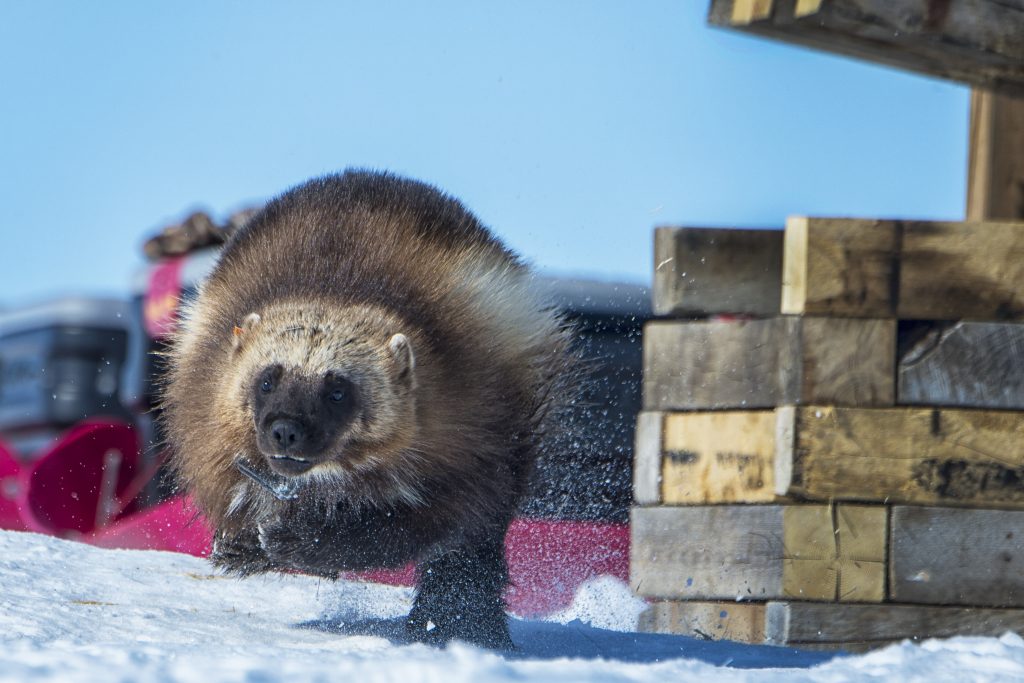A small female wolverine feeds on a caribou carcass in Alaska’s Brook Range. A pack of wolves chased a small herd of caribou over cliffs, killing eight of the ungulates. Wolves, bears, eagles, foxes, and ravens gathered to feed on the carrion for a month. Photo by Peter Mather.
When I first moved to Alaska, right out of college, I quickly realized that Alaskans don’t perceive adventure the same way as folks Outside. Surrounded by new friends who hiked across Baranof Island and competed in the 150-mile Wilderness Classic, I started to realize exactly what ambition and endurance truly meant. I solidified those concepts by studying wolverines.
The wolverines in question lived on the North Slope, and we were studying them to better understand their ecology in the region. As I watched the first one run from a live-trap, and subsequently followed her GPS track around the map on my computer screen, I couldn’t help but think that something about this story was familiar. She just kept going, come blizzard or sunshine. Her legs were hardly the length of my forearm, but there she was, loping across the endless white expanse, sometimes covering as much as 30 miles in a day. She reminded me of my bush-whacking friends trekking the trailless wilderness across Baranof. I started to see the wolverine as yet another awe-inspiring Alaskan.
I try to not anthropomorphize animals; their minds and bodies work in fundamentally different ways than our own, and at the end of the day, we cannot truly know what their lives are like. But there is an undeniable parallel between a wolverine’s rough-and-ready attitude and the adventurous spirit of Alaskans. Wolverines eke out their lives in the harsh and unforgiving northern landscapes of the world—tundra, taiga, and rugged alpine mountains. The size of a cocker spaniel, they are known to kill moose, caribou, and other ungulates, while also cleverly stockpiling carrion in snow caches against leaner times. Genetic samples provided by fur trappers around Alaska are showing us that wolverines aren’t much impeded by big landscape barriers, like mountain ranges or rivers. Instead, these animals travel across this great state as a vole traverses a meadow, scarcely slowing as they cross the Yukon, the Alaska Range, even sea ice, before settling into a territory half the size of Rhode Island.

On the North Slope, we have followed their tracks, admittedly by plane or snow machine, for nearly 40 miles as they wear down an unfortunate caribou. We’ve observed them as they lope up and over mountains in 40 minutes on a trajectory that would take any human (even an Alaskan) at least a few hours. Sometimes, they seem to go out of their way to summit a peak, spending a few minutes on the top with the view before descending to the next valley. One male wolverine, who we named Iorek after the fictional armored bear in Phillip Pullman’s The Golden Compass, traversed a third of the North Slope in just 10 days. Another wolverine, a mother of three kits, regularly traveled 20 miles or more per day in April 2016, searching for food for her young.
When I venture into the wilderness these days, I like to estimate how long it would take a wolverine to cover the same ground. I never win. They inspire me to push a little harder, roam a little farther, and spend more time in the land of the wolverine.



Comments are closed.